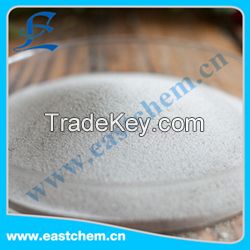Product Name: Cenosphere
CAS No.: *********7
H.S. No.: *******0.*0
Purity: *9%min
Other Name: Hollow Microsphere
Advantages microspheres
cenosphere
1.Higher filler loading With the lowest surface area tovolume ratio of any shape, cenospheres increase volume loading capacity.That can mean higher solids/reduced VOCs, reduced shrinkage, and reduced cost through lower resindemand in certain applications.
2.Lower viscosity and improved
flow Unlike irregularly shaped fillers, cenospheres roll easily
over oneanother. Depending on your application, this trait can
offer a number of potential benefits. For example, in molded
plastics, cenospheres can help reduce warpage. Other potential
enhancements are noted on the flap at right
3.Reduced Weight
Light-weighting; filler loading, reduced shrinkage, lower
viscosity
4.Low thermal conductivity. The
thermal conductivity of the microspheres is 0.*8 W / m *
Feature reflectivity and heat dissipation
5.High strength. This feature
аllowing the use of microspheres for needs of Bonding,
internal structure; asphalt, concretes, paints,
ceramics.
6.High thermal stability.
Melting point - from ***0 ° Гsed for production foundries with
high temperature coatings and flame-retardants
7.Cost effective per unit volume
Lightweight cenospheres occupy more space than an equal weight
of typical mineral filler. This means that,when you consider
cost per unit volume instead of cost per pound, cenospheres can
be a cost effective choice in many applications- especially
when you factor in the enhancements possible with cenospheres
technology.
Application microspheres
cenosphere
1.Oil field: Cementing, drilling muds (decrease slurry density without increased water content).
2.Construction: Acoustic
enhancement, acrylic, adhesives, coatings, backer board, wall
panels, cements, cultured marble, epoxy, explosives, Exterior
Insulation Finishing Systems (EIFS), fiberglass, laminates,
light weight aggregate, synthetic wood, spackle, carpet
backing, geothermal cements, concrete fiber board, joint
compound, wood fillers.
3.Ceramics: Tiles, firebricks,
coatings, refractory, insulating materials, high temperature
cement.
4.Plastics: Polyethylene,
polypropylene, nylon, PVC, compounding, film, urethane, potting
compounds.
5.Automotive: Soundproofing,
under-coatings, brake pads, sealants, body fillers and putties,
composites,steering wheels.
6.Recreation: Flotation, bowling
balls, surf boards, golf equipment, marine compounds,
kayaks.
7.Aerospace: Ceramic insulation,
tortuous path matrix, propeller blades.
8.Coatings: Highways, driveways,
underground pipes, and heat-shielding
requirements

